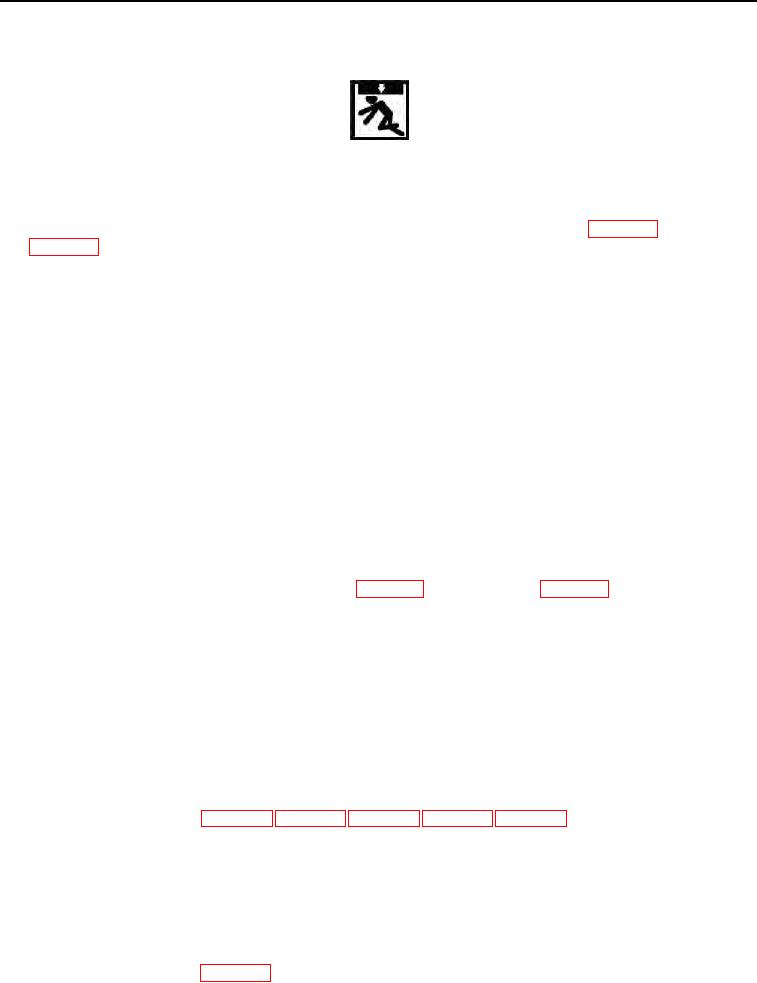
TM 5-3805-292-23
0172
CLEANING AND FLUSHING HYDRAULIC SYSTEM CONTINUED
WARN I N G
Before disconnecting any hydraulic lines, make sure that attachments will not fall. Put
supports under attachments as required. Move all control levers in both directions to
relieve any circuit pressure. Failure to follow this warning may result in injury or death to
personnel.
5. Disconnect hydraulic lines from closed ends and rod ends of all cylinders (lift cylinder (WP 0086); tilt cylinder
N OT E
Check hydraulic oil level frequently while performing steps 6 and 7.
6. Start and run engine at low idle.
N OT E
Place container under hydraulic lines.
7. Move each control lever in both directions until clean hydraulic oil flows from each hydraulic line.
8. Stop engine.
9. Connect hydraulic lines to closed ends of cylinders.
10. Start and run engine at low idle.
11. Move control levers to extend the rods of all cylinders. While rods are being extended, hydraulic oil will be
pushed from rod ends of cylinders.
12. Stop engine.
13. Connect hydraulic lines to rod ends of lift cylinder (WP 0086) and tilt cylinder (WP 0087).
14. Check hydraulic oil level. Add hydraulic oil as required.
CLEANING HYDROSTATIC SYSTEM
000172
N OT E
The hydrostatic system is a closed loop consisting of a charging pump, piston pump,
cooler, reservoir, and associated hoses. Any contamination in the hydrostatic system will
stay in the closed loop. If a component, hose, or tube in the hydrostatic system is removed
for any reason, cleaning the hydrostatic system is mandatory. If any contamination is left
in the closed loop, the contamination will damage the components in the hydrostatic
system.
N OT E
A scratch or groove that can be caught by a fingernail warrants a rebuild of component.
2. Disassemble, clean, and inspect piston pumps and motors.
3. Clean all hoses and tubes in hydrostatic system with hot, soapy water and dry thoroughly before installing. See
Cleaning Hoses, Tubes, and Fittings in this work package.
4. Change hydraulic oil filter (WP 0072).
0172-8

